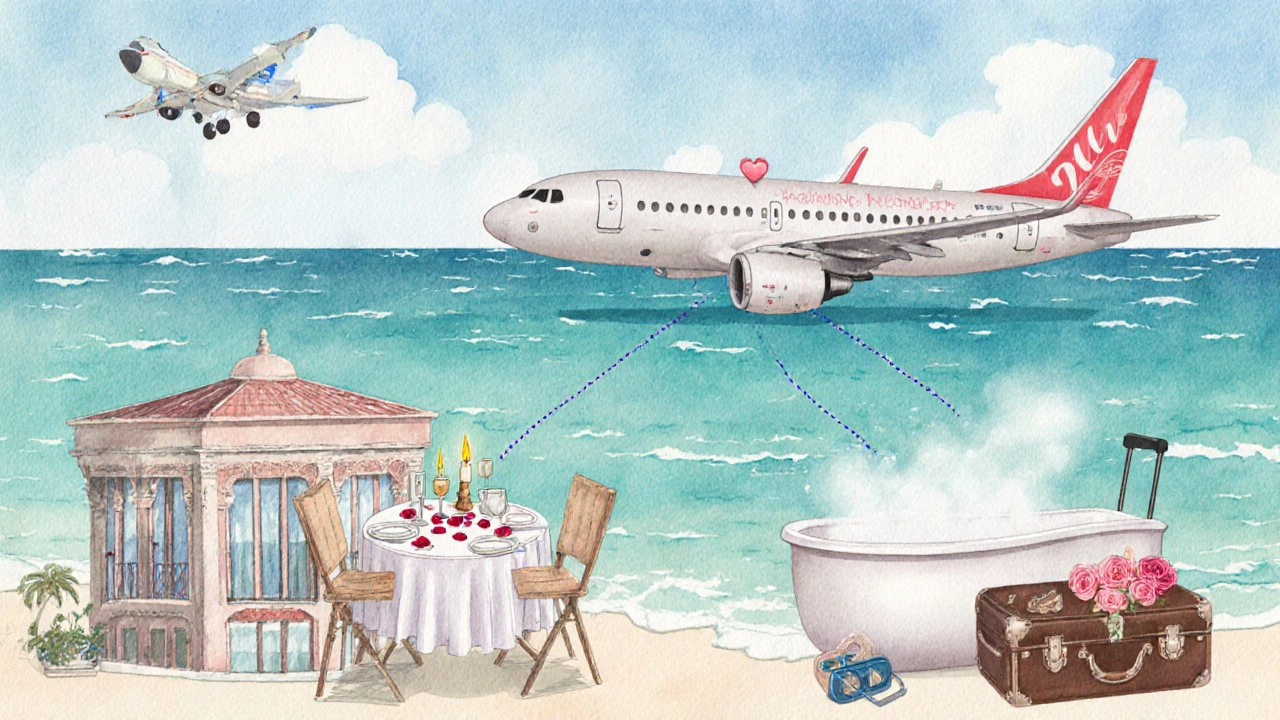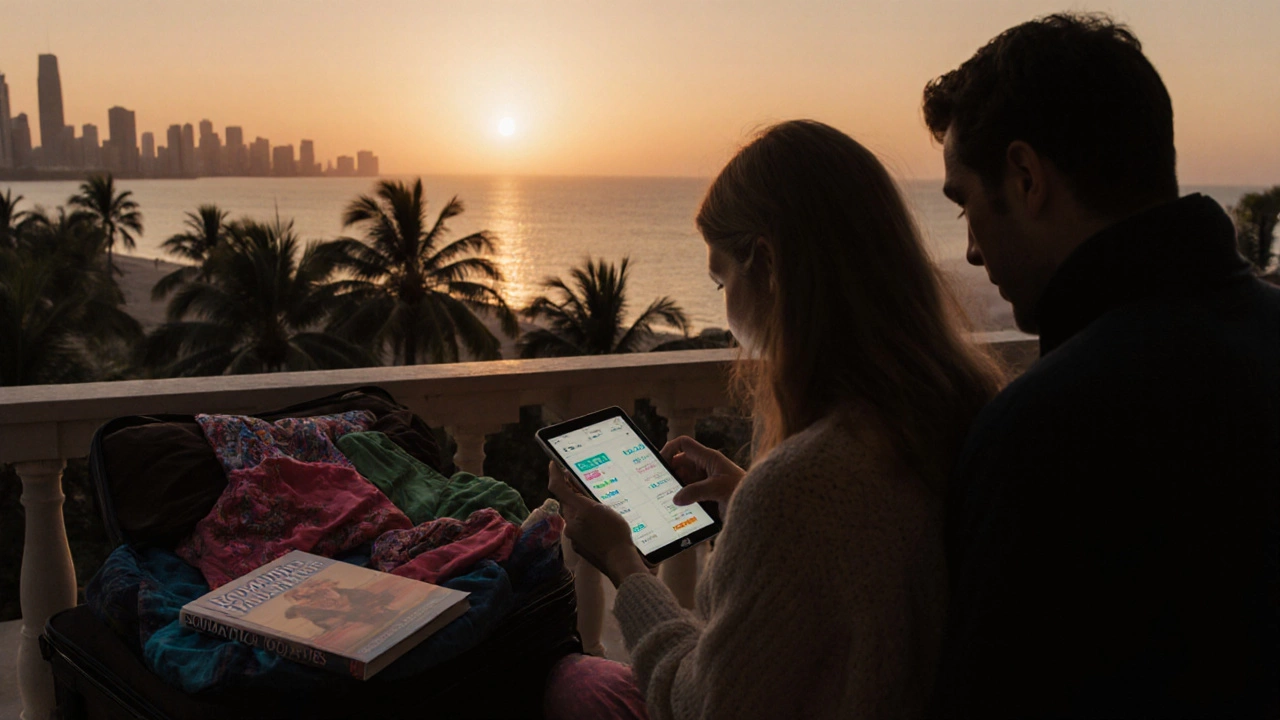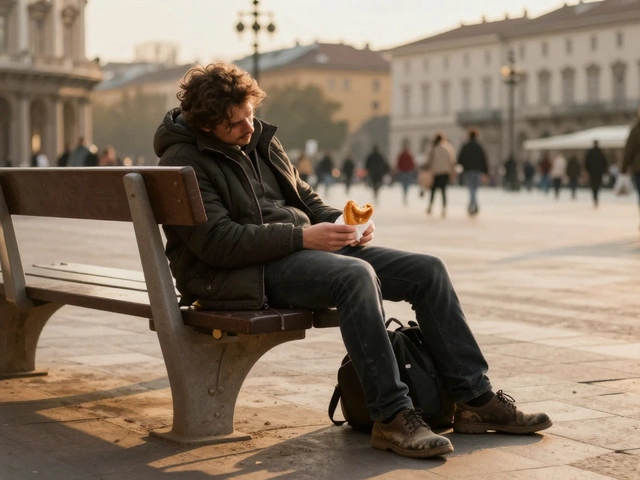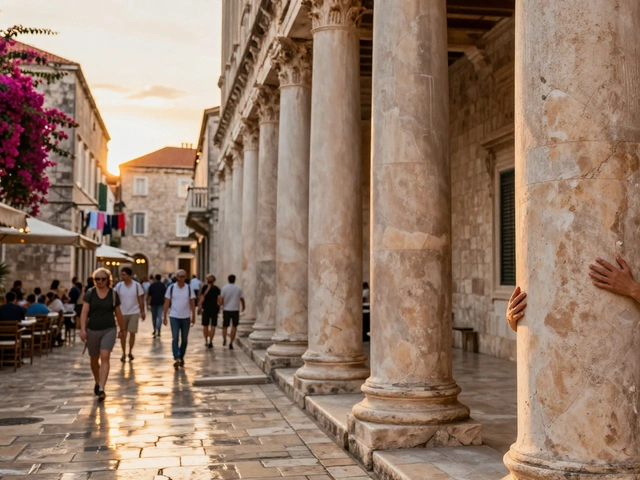Love Holiday Cost Calculator
Estimate Your Love Holiday Savings
Your Love Holiday Cost
$0
Including flights, hotel, and romantic package
Regular Vacation Cost
$0
For same destination and dates
You Save
Why You're Saving
-
Seasonality
Off-Peak Pricing -
Package Deals
Bundled Discounts -
Budget Airlines
Low-Cost Carriers -
Destination Incentives
DMO Subsidies
Ever stared at a travel ad promising a candle‑lit dinner on a sun‑kissed beach for less than the price of a weekend in your own city and wondered, how is that even possible? You’re not alone. Cheap romantic getaways have baffled many, especially when the same destination feels pricey for a regular family vacation. This article pulls back the curtain on why love holidays often come with a friendlier price tag, and shows you how to make the most of those deals.
What exactly is a "love holiday"?
Love holidays are short trips or mini‑vacations specifically planned for couples to celebrate a relationship milestone, a birthday, Valentine’s Day, or simply a weekend escape together. They differ from generic holidays because the focus is on intimacy, shared experiences, and often a touch of romance. In the travel industry, they’re also referred to as romantic getaways, a niche that operators market heavily during certain calendar windows.
Seasonality: The power of off‑peak timing
One of the biggest reasons love holidays are cheap is timing. Most couples book trips around holidays like Valentine’s Day, which falls in February for many parts of the world. In many destinations, February is an off‑peak season - a lull period for business travelers and families.
- Lower hotel occupancy means discount rates.
- Airlines operate fewer flights, prompting them to fill seats with lower fares.
- Local attractions offer reduced entry fees to keep visitor numbers up.
Because demand is softer, providers can afford to cut prices without hurting profits, and they love to advertise the bargains to couples eager for a romantic escape.
Bundling magic: Travel packages that seal the deal
Travel operators love to bundle. A travel package typically includes flights, a boutique hotel, a dinner reservation, and sometimes a spa treatment-all for a single price.
The math works like this:
- Airlines sell seats at a discounted bulk rate to the tour operator.
- Hotels reserve a block of rooms and receive a guaranteed occupancy level.
- The operator then adds a modest markup and markets the package as a "complete romantic experience".
Because each partner in the chain gets a guaranteed revenue stream, they’re happy to lower the final price for the consumer.
Budget airlines and low‑cost carriers
When you think of a love holiday, you might imagine a luxurious cabin, but many couples opt for short hops on budget airlines. These carriers thrive on high volume, low margin models and often run flash sales targeting couples planning a quick escape.
Key tactics they use:
- Limited‑time promo codes released via email newsletters.
- Dynamic pricing that drops sharply a few weeks before departure if seats remain unsold.
- Ancillary bundles-like "Romance Pack"-that add a bottle of wine or a seat upgrade for a small fee, making the base fare look even more attractive.

Tour operators competing for the “couples” market
Specialized tour operators have turned the couples segment into a battlefield of offers. They compete on:
- Exclusive venue partnerships (e.g., a rooftop dinner that’s not open to the general public).
- Added‑value experiences like sunrise hikes, private yacht tours, or couples' cooking classes.
- Flexible cancellation policies that appeal to romance‑driven spontaneity.
When multiple operators pitch similar experiences, prices naturally drop, and the lowest‑cost offers win the click.
Destination marketing incentives
Local tourism boards love to attract couples because they tend to spend more per day on experiences (dinners, spa treatments, souvenirs). To lure them, many destination marketing organizations (DMOs) subsidize promotions.
Examples include:
- Government‑funded "Romance Pass" that gives couples discounted entry to museums and parks.
- Co‑funded advertising campaigns that feature couples on social media, driving organic interest.
- Tax rebates for hotels that offer "all‑inclusive" romance packages during off‑peak months.
These subsidies let local businesses lower consumer prices while still maintaining revenue.
Currency fluctuations and cost-of‑living advantages
If you’re traveling from a country with a strong currency, you’ll notice the price tag shrink dramatically when you land in a destination where the cost of living is lower. For example, a South African couple visiting Bali in February often pays half of what a European traveler would pay at peak season.
Travelers can leverage this by:
- Monitoring exchange rates and booking when their home currency is strong.
- Choosing destinations with a favorable cost‑of‑living index during the travel window.
This currency advantage is a hidden “discount” that makes love holidays appear cheaper than other trips.

Practical checklist: How to lock in the cheapest love holiday
- Subscribe to airline and hotel newsletters for flash‑sale alerts.
- Set price alerts on travel comparison sites for your chosen destination.
- Travel during the month before or after Valentine’s Day to capture off‑peak pricing.
- Look for packaged deals that bundle accommodation, meals, and experiences.
- Check DMO websites for "couples" or "romance" promotions.
- Consider emerging destinations where tourism boards are eager to attract foreign couples.
- Use a credit card that offers travel‑related discounts or points that can be redeemed for a free night.
Follow these steps, and you’ll often find a love holiday that costs less than a weekend stay at home.
Comparison table: Factors affecting price of love holidays vs. regular vacations
| Factor | Love Holiday | Regular Vacation |
|---|---|---|
| Seasonality | Off‑peak (Feb‑Mar) | Peak (Jun‑Aug) |
| Package bundling | High (flight + hotel + romance add‑on) | Low (flight + hotel only) |
| Airline type | Budget carrier promos | Full‑service airlines |
| Tour operator competition | Intense (many couples‑focused offers) | Moderate |
| Destination incentives | DMO subsidies for romance | General tourism incentives |
| Currency advantage | Often higher (travelers from strong currencies) | Variable |
FAQs
Why do many love holidays fall in February?
February lines up with Valentine’s Day, a cultural moment that encourages couples to travel. At the same time, it’s off‑peak for many destinations, letting airlines and hotels slash prices.
Are packaged love holiday deals really cheaper than booking separately?
Usually, yes. Tour operators negotiate bulk rates with airlines and hotels, then pass the discount to you. The convenience of an all‑in‑one price often beats the sum of individual bookings.
Can I find cheap love holidays in high‑cost cities like Paris?
It’s tougher, but possible. Look for off‑peak weeks, boutique hotels offering weekend specials, or last‑minute flight deals. Sometimes nearby towns provide the romantic vibe at a fraction of the city price.
Do travel insurance costs affect the cheapness of love holidays?
Insurance adds a small incremental cost, but many credit cards include coverage for free. When you compare total out‑of‑pocket spend, the discount on the core package often dwarfs the insurance fee.
How can I use currency fluctuations to my advantage?
Set up alerts on platforms like XE or OANDA. When your home currency spikes, lock in the price. Booking during a strong‑currency period can shave 10‑30% off the total cost.






